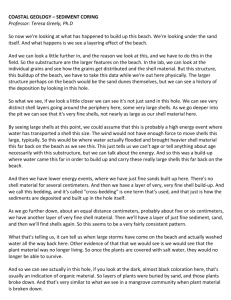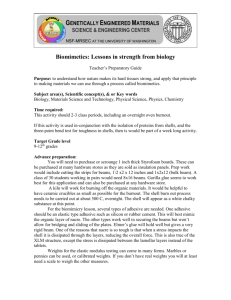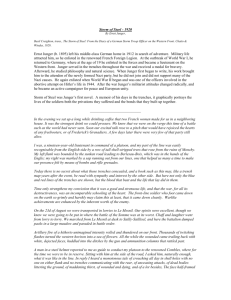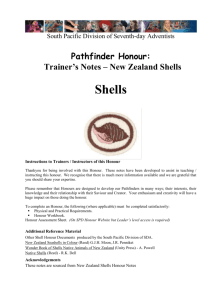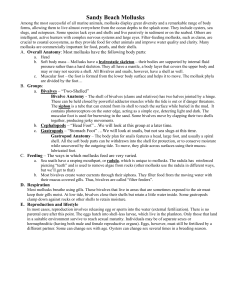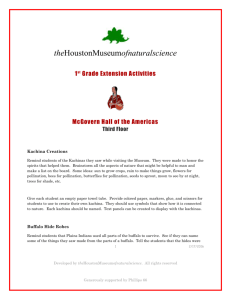Sclerochronology and gowth modalities of a Concholepas
advertisement
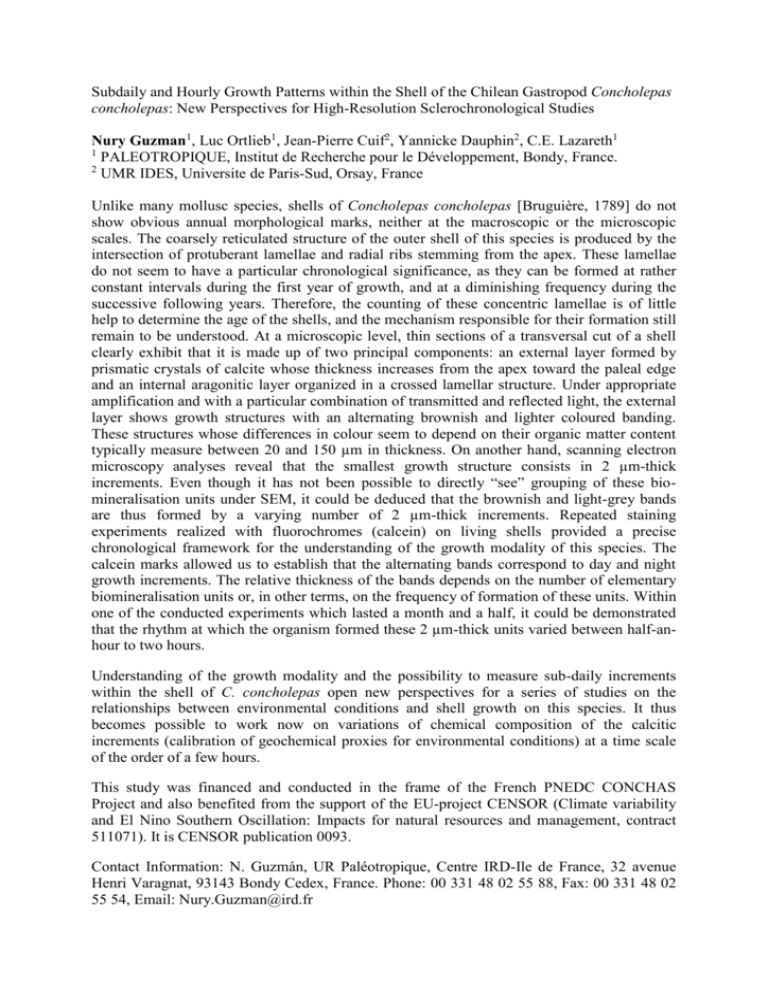
Subdaily and Hourly Growth Patterns within the Shell of the Chilean Gastropod Concholepas concholepas: New Perspectives for High-Resolution Sclerochronological Studies Nury Guzman1, Luc Ortlieb1, Jean-Pierre Cuif2, Yannicke Dauphin2, C.E. Lazareth1 1 PALEOTROPIQUE, Institut de Recherche pour le Développement, Bondy, France. 2 UMR IDES, Universite de Paris-Sud, Orsay, France Unlike many mollusc species, shells of Concholepas concholepas [Bruguière, 1789] do not show obvious annual morphological marks, neither at the macroscopic or the microscopic scales. The coarsely reticulated structure of the outer shell of this species is produced by the intersection of protuberant lamellae and radial ribs stemming from the apex. These lamellae do not seem to have a particular chronological significance, as they can be formed at rather constant intervals during the first year of growth, and at a diminishing frequency during the successive following years. Therefore, the counting of these concentric lamellae is of little help to determine the age of the shells, and the mechanism responsible for their formation still remain to be understood. At a microscopic level, thin sections of a transversal cut of a shell clearly exhibit that it is made up of two principal components: an external layer formed by prismatic crystals of calcite whose thickness increases from the apex toward the paleal edge and an internal aragonitic layer organized in a crossed lamellar structure. Under appropriate amplification and with a particular combination of transmitted and reflected light, the external layer shows growth structures with an alternating brownish and lighter coloured banding. These structures whose differences in colour seem to depend on their organic matter content typically measure between 20 and 150 µm in thickness. On another hand, scanning electron microscopy analyses reveal that the smallest growth structure consists in 2 µm-thick increments. Even though it has not been possible to directly “see” grouping of these biomineralisation units under SEM, it could be deduced that the brownish and light-grey bands are thus formed by a varying number of 2 µm-thick increments. Repeated staining experiments realized with fluorochromes (calcein) on living shells provided a precise chronological framework for the understanding of the growth modality of this species. The calcein marks allowed us to establish that the alternating bands correspond to day and night growth increments. The relative thickness of the bands depends on the number of elementary biomineralisation units or, in other terms, on the frequency of formation of these units. Within one of the conducted experiments which lasted a month and a half, it could be demonstrated that the rhythm at which the organism formed these 2 µm-thick units varied between half-anhour to two hours. Understanding of the growth modality and the possibility to measure sub-daily increments within the shell of C. concholepas open new perspectives for a series of studies on the relationships between environmental conditions and shell growth on this species. It thus becomes possible to work now on variations of chemical composition of the calcitic increments (calibration of geochemical proxies for environmental conditions) at a time scale of the order of a few hours. This study was financed and conducted in the frame of the French PNEDC CONCHAS Project and also benefited from the support of the EU-project CENSOR (Climate variability and El Nino Southern Oscillation: Impacts for natural resources and management, contract 511071). It is CENSOR publication 0093. Contact Information: N. Guzmán, UR Paléotropique, Centre IRD-Ile de France, 32 avenue Henri Varagnat, 93143 Bondy Cedex, France. Phone: 00 331 48 02 55 88, Fax: 00 331 48 02 55 54, Email: Nury.Guzman@ird.fr




